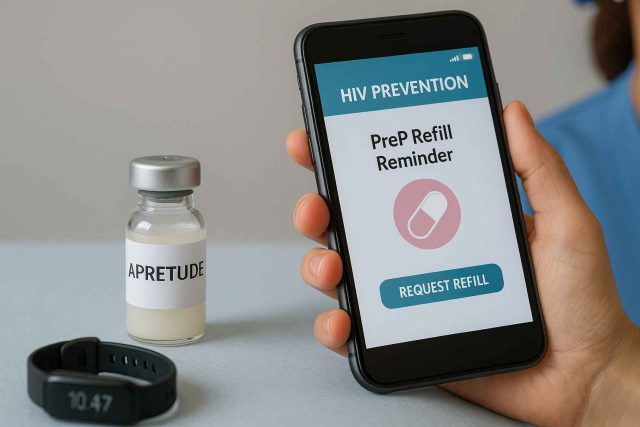Imagine trying to stop a leak in a dam with just your hands—ineffective, exhausting, and dangerous. That’s how public health experts once felt in the early years of HIV. Today, though, we have a growing arsenal of tools to not just hold back the tide, but proactively prevent HIV transmission. The landscape of HIV prevention methods has evolved dramatically in 2025, offering innovative, effective, and empowering options to individuals and communities.
But what are the most trusted HIV prevention methods now? Which ones actually work, and what exciting advances are just around the corner?
Let’s explore the present and future of HIV prevention with clarity, compassion, and purpose.
Table of Contents
- Pre-exposure Prophylaxis (PrEP): The Gold Standard Evolved
- Long-Acting Injectables: Freedom from the Pill
- Digital Health Tools and Prevention Tech
- What’s Ahead: Vaccines, Implants, and Microbiome Science
Pre-exposure Prophylaxis (PrEP): The Gold Standard Evolved
Pre-exposure prophylaxis, or PrEP, remains the cornerstone of HIV prevention methods. Traditionally delivered as a once-daily oral medication, 2025 has witnessed the rise of new PrEP formats that improve adherence and convenience.
Oral PrEP options like Truvada (emtricitabine/tenofovir disoproxil fumarate) and Descovy (emtricitabine/tenofovir alafenamide) continue to be widely used. However, adherence remains a challenge for some users. That’s where long-acting injectable PrEP like Apretude (cabotegravir) has changed the game.
Apretude is administered once every two months by a healthcare provider, eliminating the need for daily pills and dramatically improving adherence among at-risk populations, particularly among young adults and transgender individuals. According to the CDC, injectable PrEP has shown higher efficacy in clinical trials for certain groups compared to oral regimens.
To determine which PrEP strategy is right for you, consult a medical professional. You can also explore personalized HIV prevention options via Healthcare.pro.
Long-Acting Injectables: Freedom from the Pill
Beyond PrEP, long-acting antiretrovirals have opened up possibilities for people living with HIV who want to prevent transmission to others. Cabenuva, a combination of cabotegravir and rilpivirine, is a once-monthly injectable treatment that maintains viral suppression without daily oral therapy.
The principle of “U=U” (Undetectable = Untransmittable) continues to be a powerful tool in HIV prevention. If a person living with HIV maintains an undetectable viral load through consistent treatment, they cannot sexually transmit the virus to others. This message, backed by robust science, reduces stigma while empowering people with HIV.
Combining long-acting injectables with education campaigns has made HIV prevention more accessible than ever before, especially in underserved communities where healthcare access is sporadic.
For additional guidance and resources on treatment-as-prevention, visit AIDS.org.
Digital Health Tools and Prevention Tech
Technology has transformed healthcare, and HIV prevention is no exception. In 2025, mobile apps, AI-powered diagnostics, and telehealth platforms help users access prevention tools without barriers.
Apps like myPrEP, Let’s Stop HIV Together, and Healthvana offer reminders, teleconsults, PrEP refills, and even discreet testing kits by mail. Meanwhile, wearable tech now integrates sexual health tracking to alert users of risky patterns or missed doses.
Importantly, many platforms now incorporate risk assessment algorithms, helping users understand their personal exposure risks in real-time and take proactive measures. These tools support behavior change and increase access to prevention education.
As technology continues to integrate into personal health, expect more AI-driven prevention strategies, such as chatbot counseling and geolocated outreach to connect at-risk individuals with nearby services.
What’s Ahead: Vaccines, Implants, and Microbiome Science
The future of HIV prevention is bright—and more autonomous. In 2025, researchers are making significant strides in:
1. HIV Vaccines
Several vaccine candidates are in late-stage clinical trials, including those using mRNA technology, similar to what was used for COVID-19. While none are commercially available yet, the horizon looks promising for partial protection vaccines that could be used in high-risk populations.
2. Prevention Implants
Imagine a small rod implanted under the skin that delivers a steady dose of antiretroviral medication for months. Prevention implants, like those in development by the Bill & Melinda Gates Foundation, aim to offer set-and-forget protection for up to a year.
3. Microbiome-Driven Prevention
Scientists are exploring how the gut and vaginal microbiomes affect susceptibility to HIV. The hope is that one day, we might reduce HIV risk by strengthening the natural microbiome with probiotics or engineered bacteria.
As we move forward, prevention will become more personalized, user-controlled, and seamlessly integrated into daily life.
Conclusion
From daily pills to injectable PrEP, from mobile apps to futuristic implants, HIV prevention methods in 2025 are more varied, effective, and accessible than ever. The ongoing commitment of researchers, healthcare providers, and public health advocates has reshaped what it means to protect oneself and others from HIV.
Ultimately, prevention is not just about medicine—it’s about empowerment, education, and equity.
To continue learning about tools and strategies to protect yourself and your community, visit AIDS.org for expert guidance.
FAQs
What is the most effective HIV prevention method in 2025?
Long-acting injectable PrEP like Apretude is currently considered one of the most effective methods, particularly for those who struggle with daily adherence.
Can you still get HIV while on PrEP?
While rare, infection is possible if doses are missed or resistance develops. Regular testing and adherence are essential.
What does U=U mean in HIV prevention?
U=U stands for “Undetectable = Untransmittable,” meaning people with HIV who maintain an undetectable viral load cannot transmit the virus sexually.
Is there a vaccine for HIV?
As of 2025, no commercial HIV vaccine exists, but promising candidates using mRNA technology are in development.
How do I know if I need PrEP?
If you are at increased risk of HIV through sex or drug use, a healthcare provider can help assess your needs and recommend the best prevention strategy.
Disclaimer:
This content is not medical advice. For any health issues, always consult a healthcare professional. In an emergency, call 911 or your local emergency services.
